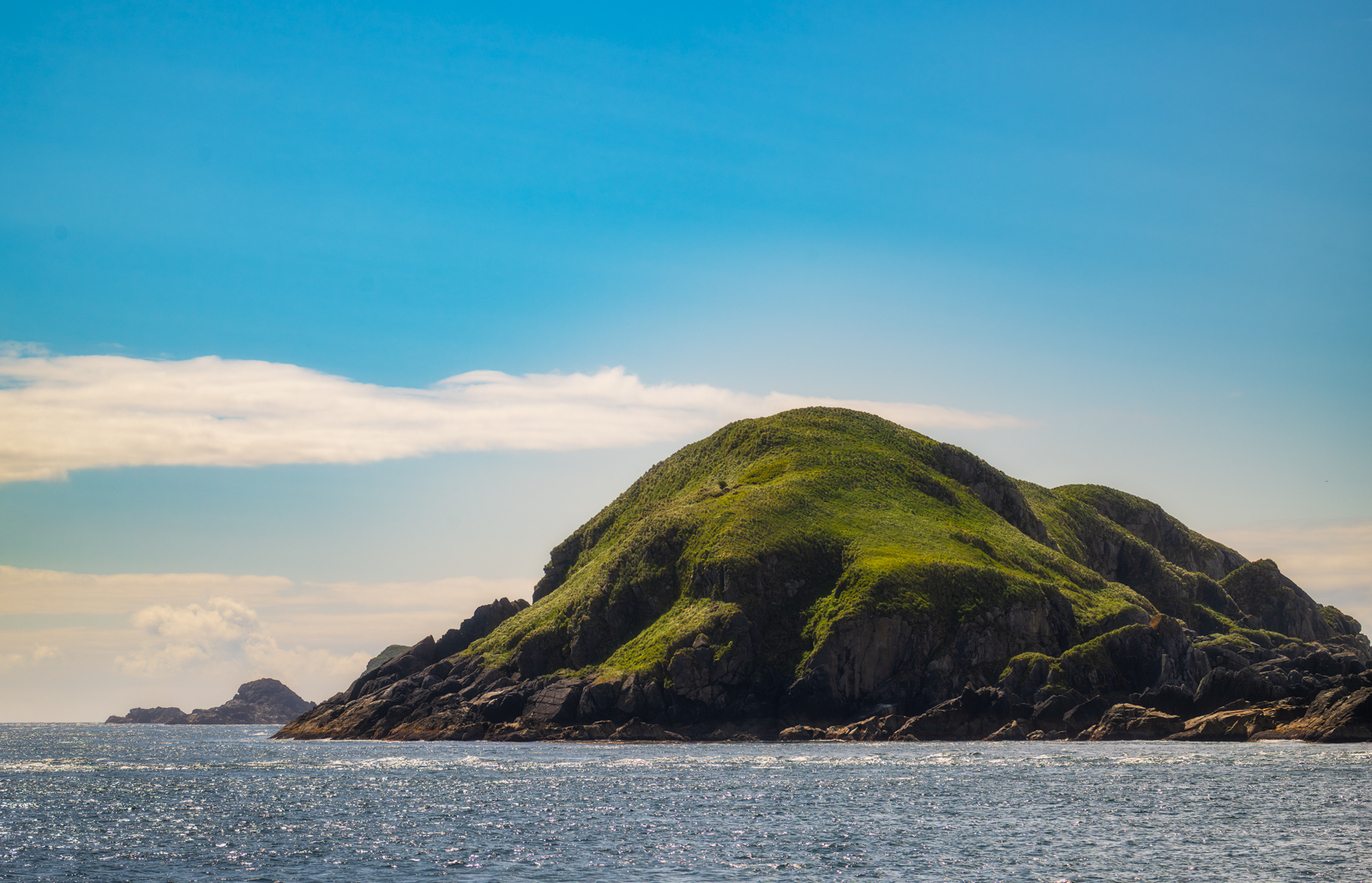by Maureen Gordon, crew member
On a small island, on the edge of a continental shelf, in the setting sun, Reg Wesley opens a box. Out comes a 4-inch, argillite raven in Reg’s hand. It’s like I’m struck.
We stand where I have been fortunate to stand before, under the giant spruce and cedar trees on the edge of Gwaii Haanas’ most spiritual site — which in turn is on the edge of the wondrous archipelago of Haida Gwaii, which in turn is on the edge of an inland sea and the wild and open Pacific ocean. Standing here this time, with Reg’s tiny raven carving, is different. To me, the raven is like a singularity, pulling past and present and future into a single, dense, black point.
Reg has carved the raven from one of the most well-known Haida origin stories: Raven Steals the Light. (In it, Raven wants the light that an old man keeps hidden in a box within other boxes in his house, and the whole world is dark. You have to hear the story from a Haida teller, but suffice to say, Raven tricks and transforms as is his modus operandi, and the world is still light today, so you know how the story ends.)
The story has been illustrated many times beautifully with the giant raven bird holding the light in his beak. But Reg’s take is different.
His raven is the raven moments before that — still a human boy in dawn light, with some bird characteristics and weird feathers sticking here and there out of his skin. To me, it seems a more modern take on an ancient and magnificent story and I love it. It may not be, for I am no expert, but the thought and Reg’s tale of his recent return to carving fits what I’ve been thinking the whole time we’ve walked below the monumental poles here at SGang Gwaay today: all around us are stories, and these stories have always been alive; they are not relics of the past as people often think.
The poles recite stories over and over as they face the beach. Carved long ago, the killer whales and bears, frogs and humans have been broadcasting people’s stories every time someone lays eyes on them. They never stopped. Each pole is a compilation of stories that are key to the identity of the person buried in them or of their family lineage. What’s more, they are stories of this place that use the animal people with whom we share the coast as key characters.
For a century, some people thought these stories were dying. They carted many of the village’s magnificent poles to museums to preserve them. Some people thought these stories were idolatry. They tried to remove them from the Haida’s upbringing. But you just have to come to Haida Gwaii and you know neither of those assumptions is true. The characters are not idols to be worshipped; they are humans and our fellow creatures. And the stories live on because they are a real way of knowing and describing what it is to be human on this coast, and the Haida never let that go.
We’ve seen this since the day we set foot in Masset a week ago. At Christian White’s big house, he and his family generously fed us and shared dances and songs that told their stories. We’ve seen it since we caressed the beautiful pole full of stories that Christian is carving right now. And since the next day at the Haida Heritage Centre near Skidegate, when young Alex told us how much she had enjoyed learning the stories so that she could share them – including those on the recently carved poles at the centre – with us.
We have encountered the ravens and eagles and bears of this place, and have known them not just as species in nature but as the characters that people have lived with for so long here.
At SGang Gwaay, we stay quite a while with Reg talking about his carving, so long that the sun is slipping below Moresby Island’s mountains as we ride the waves away from the beach. Our ship, the schooner Maple Leaf, leans back a little on her anchor in the breeze. The sun gilds the sea mist in the air and silhouettes the ship and islands into a dream world, filled with mystery and possibility.
Later that evening, after dinner and after the Maple Leaf has rafted up in Louscoone Inlet with our expedition’s second ship the Swell, we gather to hear anthropologist and storyteller Wade Davis talk about human cultures and their approaches to living on this planet. We are eighteen guests and 10 crew including Wade and eminent ecologist Bristol Foster.
In the Swell’s cozy salon near the rainforest, just around the corner from SGang Gwaay, we hear about the genius of human culture as it evolves over millennia to understand and succeed in a particular place, including the culture of the Haida in Haida Gwaii. I wonder how many of us are holding the faces of SGang Gwaay’s killer whale or bear mother poles in our minds, or thinking, in those moments, about the small piece of argillite that has become a raven in the hands of a re-born Haida carver. A raven that is in the process of transforming again, holding the light of the future in his beak.



